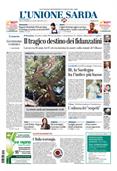Books: “Black Danae” by Giovanni Luigi Francesco Fiabane
Pettirosso Edizioni's adventure and coming-of-age novel is now available in bookstores.Per restare aggiornato entra nel nostro canale Whatsapp
It's the autumn of 1658 when, on a humid, cloudy afternoon, young Stefano has an encounter that will change his life forever. At the gates of the village of Porto Escuso, on a cart from Villa Ecclesia, a man with deep green eyes and wearing a faded, tattered dress appears. He claims his name is François Delavera: a man with a mysterious past, fleeing from something or, perhaps, searching for someone. The first mystery, which will remain a mystery for the villagers for a long time, is soon revealed by the author, Giovanni Fiabane: the man is actually a woman, her real name is Danae, and she comes from Ireland.
The meeting between Stefano and Danae corresponds – if we may allow ourselves a parallel – to that between Jim Hawkins and a figure halfway between old Billy Bones and the pirate Long John Silver in “Treasure Island.” He, as in Stevenson’s novel, represents the ambiguity of morality and, with it, the impossibility of defining with certainty the boundary between good and evil, even if this can be done to avoid a worse one.
“Black Danae” (Pettirosso editore, 532 pages) is an adventure and coming-of-age novel which, through the prevailing point of view of Stefano – witness and chronicler of the events narrated – takes the reader between Ireland and the New World, then returning to the Old Continent and exploring the relationships with the provinces of the Ottoman Empire .
Sulcis is not a narrative device, but rather a hub for all the characters' adventures, a place that maintains cohesion between the past and the future.
Within its pages, we will encounter corsairs and pirates, Spanish grandees and humble fishermen, in a time when travel was certainly dangerous but, paradoxically, borders seemed less closed, richer in possibilities. Even dangerous Algiers will reveal itself to be a place of opportunity, for those who grasp it with a heart free from prejudice. Indeed, it is often in the different and the unexpected that the protagonists will find shelter, love, and peace.
Fiabane offers the reader a complex story full of twists and turns, and a narrative voice that, not without some effort, attempts to convey a diary-like quality and therefore natural and intriguing. Overall , however, we note that greater editorial care, aimed at reducing some recurring artifices and the not inconsiderable number of typos, would have benefited the novel.
